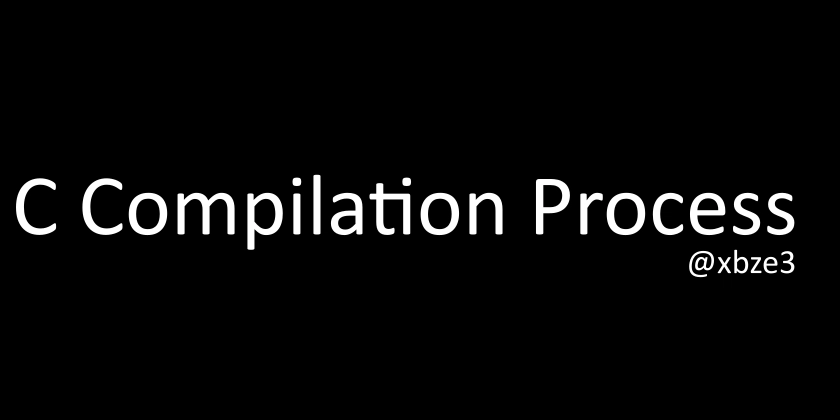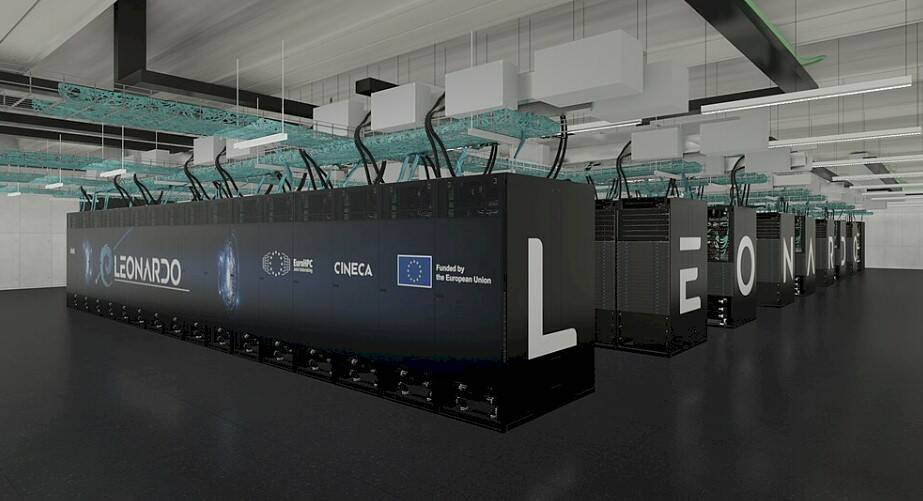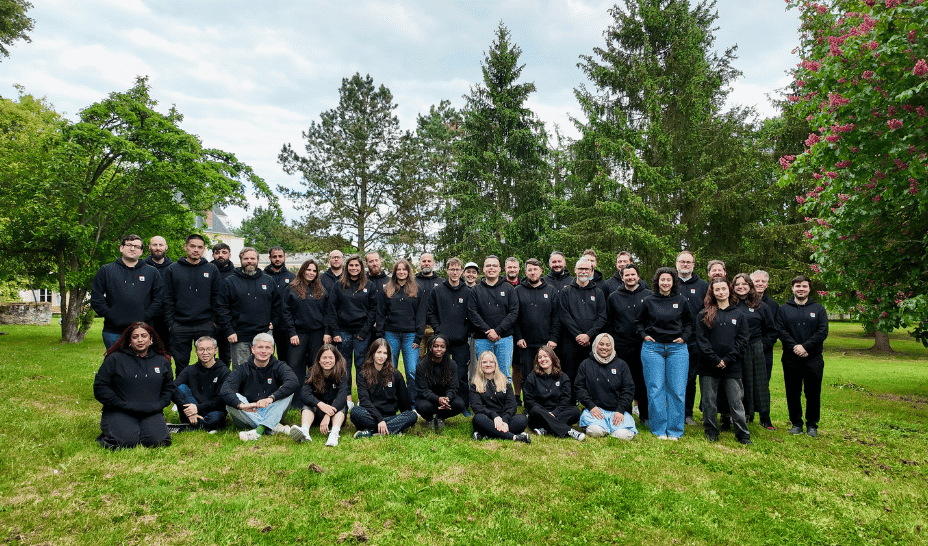The C Compilation Process: From Source Code To Success
Introduction A compiler is a special type of software that takes source code written in one programming language - usually a high-level language like C or Java - and translates it into another language, often a lower-level language like assembly or machine code. This allows the code to be executed by the hardware. While this is the general idea, the definition is intentionally broad because compilers come in many shapes and sizes, each with different goals and behaviors. In the next section, we’ll explore some of the main types of compilers and what makes them unique. Types of Compilers There are different types of compilers, each with its own designated purpose. Some of these are: Cross Compilers - These are used to generate executable code for a platform or architecture different from the one on which the compiler itself is running. This is especially useful in embedded systems development, where the target device (like a microcontroller or IoT device) cannot compile code on its own. Transpilers - This kind of compiler is used to convert source code from one high-level programming language to another high-level language. Ahead-of-Time (AOT) Compilers - These compilers translate source code written in a high-level programming language into a lower-level language (such as machine code or assembly) before the program is run. The resulting executable can then be distributed and run without the need for the source code or compiler at runtime. This is the traditional compilation model used by languages like C and C++. Just-In-Time Compilers - These are compilers that combine interpretation and compilation. Instead of compiling code ahead of time, they compile it at runtime, just before it is executed. This allows programs to run on any platform initially and be optimized on the fly based on usage patterns. Difference between Compilers and Interpreters While both compilers and interpreters are tools that translate high-level source code into executable code, they both complete this task in different ways, with each having its own designated pros and cons. The main difference between compilers and interpreters is that compilers translate the entire source code into machine code before the program runs, while interpreters translate and execute code line-by-line at runtime, without producing a separate machine code file. Fun Fact: Some modern languages (like Java and JavaScript) use a combination of both: the source code is partially compiled into intermediate code (like bytecode), then interpreted or JIT-compiled at runtime. What Is the C Compilation Process? Before we begin our compilation journey, we must first have a source file. source.c In our case: source.c Inside our source file, we have a simple C program to print Hello World. #include int main() { printf("Hello World!!\n"); return 0; { Our first stop is the Preprocessing Phase. The compiler first handles all preprocessor directives. These are the lines that start with (#). In our program, this is #include It replaces these lines with the full contents of the file that was included. In our case, this is the stdio.h file. This process can be thought of as pasting the contents of stdio.h into our code. The result is a new file called the Translation Unit. In our case, this new file is source.i. File State: source.c → source.i Command: gcc -E source.c -o source.i After preprocessing, we then move on to the actual Compilation Process. At this stage, the compiler translates the preprocessed code (now in source.i) into assembly language for your machine. This leaves us with a new file named source.s . File State: source.i → source.s Command: gcc -S source.i -o source.s Up next, we have the Assembly Phase. At this stage, the assembler translates the assembly code (source.s) into machine code (binary instructions). The output of this operation is an Object File (.o or .obj) This leaves us with the file source.o . File State: source.s → source.o Command: gcc -c source.s -o source.o Our final stop on our compilation journey is the Linking Phase. Within this final stage, the linker combines our object file (source.o) with other necessary object files and libraries. E.G., It links in the standard C library to resolve the symbol printf. The result of this phase is our complete source executable file File State: source.o → source Command: gcc source.o -o source After all these phases have been completed successfully, our final source executable can be run with the command ./source Conclusion Compilers are an essential part of the programming world, acting as the bridge between human-readable source code and machine-executable instructions. From traditional ahead-of-time compilers to modern just-in-time and cross-compilers, each type plays a unique role in enabling programs to run efficiently across different platforms and

Introduction
A compiler is a special type of software that takes source code written in one programming language - usually a high-level language like C or Java - and translates it into another language, often a lower-level language like assembly or machine code. This allows the code to be executed by the hardware. While this is the general idea, the definition is intentionally broad because compilers come in many shapes and sizes, each with different goals and behaviors. In the next section, we’ll explore some of the main types of compilers and what makes them unique.
Types of Compilers
There are different types of compilers, each with its own designated purpose. Some of these are:
- Cross Compilers - These are used to generate executable code for a platform or architecture different from the one on which the compiler itself is running. This is especially useful in embedded systems development, where the target device (like a microcontroller or IoT device) cannot compile code on its own.
- Transpilers - This kind of compiler is used to convert source code from one high-level programming language to another high-level language.
- Ahead-of-Time (AOT) Compilers - These compilers translate source code written in a high-level programming language into a lower-level language (such as machine code or assembly) before the program is run. The resulting executable can then be distributed and run without the need for the source code or compiler at runtime. This is the traditional compilation model used by languages like C and C++.
- Just-In-Time Compilers - These are compilers that combine interpretation and compilation. Instead of compiling code ahead of time, they compile it at runtime, just before it is executed. This allows programs to run on any platform initially and be optimized on the fly based on usage patterns.
Difference between Compilers and Interpreters
While both compilers and interpreters are tools that translate high-level source code into executable code, they both complete this task in different ways, with each having its own designated pros and cons.
The main difference between compilers and interpreters is that compilers translate the entire source code into machine code before the program runs, while interpreters translate and execute code line-by-line at runtime, without producing a separate machine code file.
Fun Fact: Some modern languages (like Java and JavaScript) use a combination of both: the source code is partially compiled into intermediate code (like bytecode), then interpreted or JIT-compiled at runtime.
What Is the C Compilation Process?
Before we begin our compilation journey, we must first have a source file.
source.c
In our case: source.c
Inside our source file, we have a simple C program to print Hello World.
#include Our first stop is the Preprocessing Phase.
- The compiler first handles all preprocessor directives. These are the lines that start with (#). In our program, this is
#include - It replaces these lines with the full contents of the file that was included. In our case, this is the
stdio.hfile. This process can be thought of as pasting the contents ofstdio.hinto our code. -
The result is a new file called the Translation Unit. In our case, this new file is
source.i.File State:
source.c→source.i
Command:gcc -E source.c -o source.i
After preprocessing, we then move on to the actual Compilation Process.
- At this stage, the compiler translates the preprocessed code (now in
source.i) into assembly language for your machine. -
This leaves us with a new file named
source.s.File State:
source.i→source.s
Command:gcc -S source.i -o source.s
Up next, we have the Assembly Phase.
- At this stage, the assembler translates the assembly code (
source.s) into machine code (binary instructions). - The output of this operation is an Object File (.o or .obj)
-
This leaves us with the file
source.o.File State:
source.s→source.o
Command:gcc -c source.s -o source.o
Our final stop on our compilation journey is the Linking Phase.
- Within this final stage, the linker combines our object file (
source.o) with other necessary object files and libraries. E.G., It links in the standard C library to resolve the symbolprintf. -
The result of this phase is our complete
sourceexecutable fileFile State:
source.o→source
Command:gcc source.o -o source
After all these phases have been completed successfully, our final source executable can be run with the command
./source
Conclusion
Compilers are an essential part of the programming world, acting as the bridge between human-readable source code and machine-executable instructions. From traditional ahead-of-time compilers to modern just-in-time and cross-compilers, each type plays a unique role in enabling programs to run efficiently across different platforms and architectures. Understanding how compilers work, from preprocessing to linking, not only deepens your appreciation for what happens under the hood but also empowers you to write more efficient, portable, and secure code. Whether you're just getting started in programming or looking to dive deeper into systems-level concepts, knowing the compilation process is a valuable step toward mastering the craft of software development.



































































































































































![[The AI Show Episode 147]: OpenAI Abandons For-Profit Plan, AI College Cheating Epidemic, Apple Says AI Will Replace Search Engines & HubSpot’s AI-First Scorecard](https://www.marketingaiinstitute.com/hubfs/ep%20147%20cover.png)












































































































































































.png?width=1920&height=1920&fit=bounds&quality=70&format=jpg&auto=webp#)






.jpeg?width=1920&height=1920&fit=bounds&quality=70&format=jpg&auto=webp#)



































































































































































































![Apple Working on Brain-Controlled iPhone With Synchron [Report]](https://www.iclarified.com/images/news/97312/97312/97312-640.jpg)





































































































